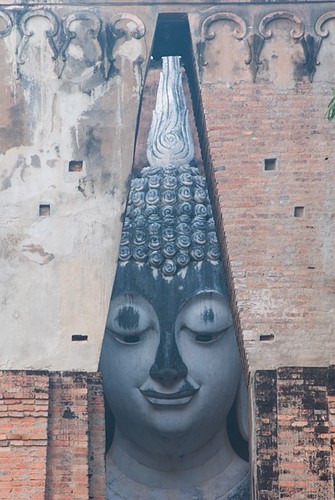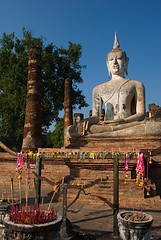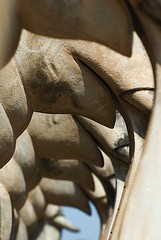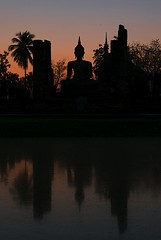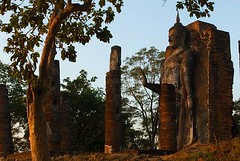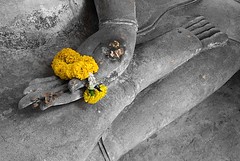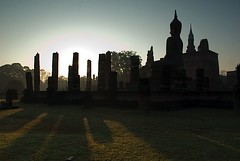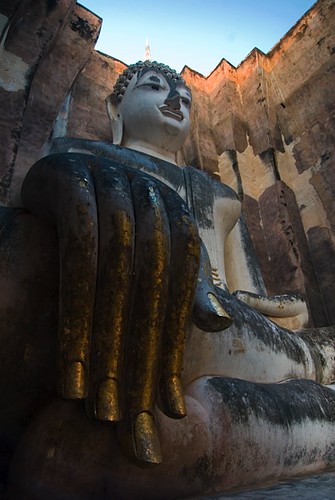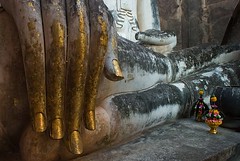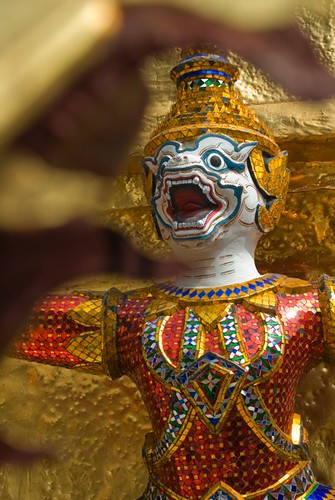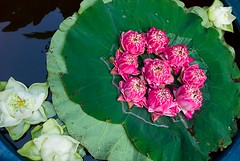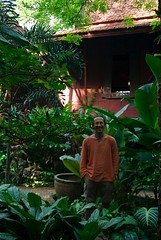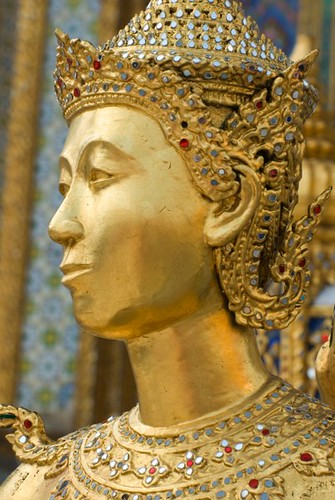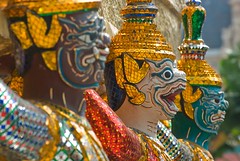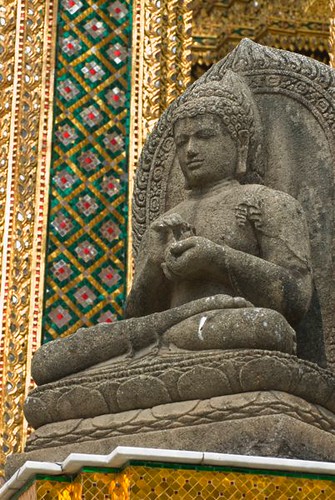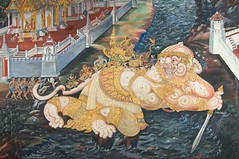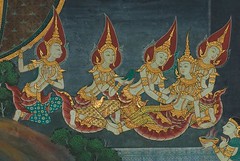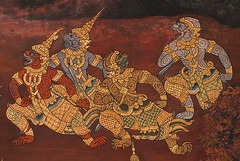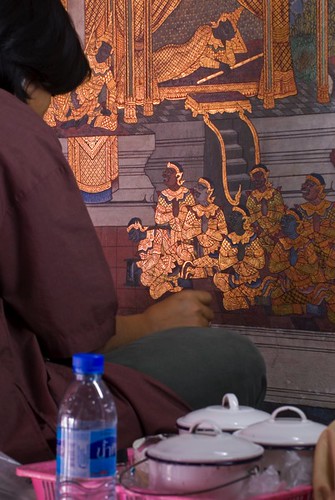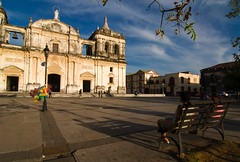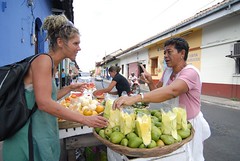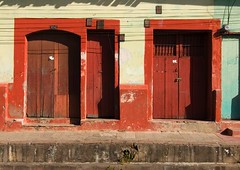
There is a new Buddhist temple being built outside Chiang Rai, if merely built is the right word. Imagined into existence is possibly a better description for this phantasmagoric brainchild of Thai artist Chaloemchai Khositphiphat and his overworking imagination.
It is close to the city of historical temples yet so far removed from them as to almost deserve a different classification. For one there is not the quiet reverent space of many temples, but a bustling tourist attraction complete with shopping and dining area, camera-snapping Thais and guardians keeping the masses in line. Welcome to Wat Rong Khun, the White Temple, the
Attention to detail is incredible with the outside of the building and other structures decorated lavishly with ornate swirling designs. The exterior is white with silver mirrors and changes colour with cloud and sun. Under cloud it has a deathly pale yellow palor, which when set behind leafless trees, is reminiscent of a Tim Burton film set. When the sun shines the mirrors twinkle and the white takes on the hues of its surroundings - grass green, sky blue and clothings reds, yellows and oranges.
The art inside the hall does strike me as being the product of a talented fantasy-loving teenager or 70s heavy metal album cover artist. That, however is not a surprise or such criticism as it may sound. Where, after all, did the artists of psychedelic album covers or fantasy novel covers get some of their inspiration? Hindu and Buddhist religious art. The wat's art brings these influences together.
It is a lot of fun with hints at attempts to make statements. Superman, Spiderman and the Matrix sit alongside Buddhist apsaras, garudas and demons. The World Trade Centre is shown during its destruction by Al Qaida with a demon-headed serpentine petrol pump pipe snaking around one of the towers. Yet how much do intended meanings resonate after a single visit? That probably depends on your attitudes to politics, fantasy and Buddhist religious art.
The dream is still being built and all power to him for making something so bold that it generates reactions from visitors. You will either love or hate it but you're unlikely to feel indifferent towards it.
As you enter you come face-to-face with a gold structure bearing a white Buddha in its ornate folds and twists.

After passing the first structure between ponds with white fish you are next greeted at the approach to the central hall by concrete hands reaching out to the air and your sense of fun. Some hold skulls up next to others proffering alms bowls.

Apsaras or bodhisatvas float in the air either side of the approach to the central hall. Every inch of the white building is adorned with white mirrors.


To either side of the hall are matching pairs of Buddhas facing each other.

The purity of white certainly makes a statement that cannot fail to influence you in some way, even if only while there. It is perhaps part Barcelona's Sagrada Familia, part Taj Maha, part Southfork.
The temple is very easy to reach from Chiang Rai. A sangthaew from the produce market station near Wat Phra Singh costs 20 baht and they leave regularly through the day. You should not have to wait more than 20 minutes. Tell the drivers you want a minibus not taxi to catch one of the regular departures rather than charter a whole vehicle for yourself at maybe 500-700 baht. You can also catch a local bus to Phayao from the old bus station in the city centre or a Chiang Mai bus from the new station on the city's edge. The journey takes less than 30 minutes. To return to Chiang Rai go up to the main road and flag down a passing sangthaew or bus. A sangthaew driver spotted us walking towards the road and waited for us to get to him.
